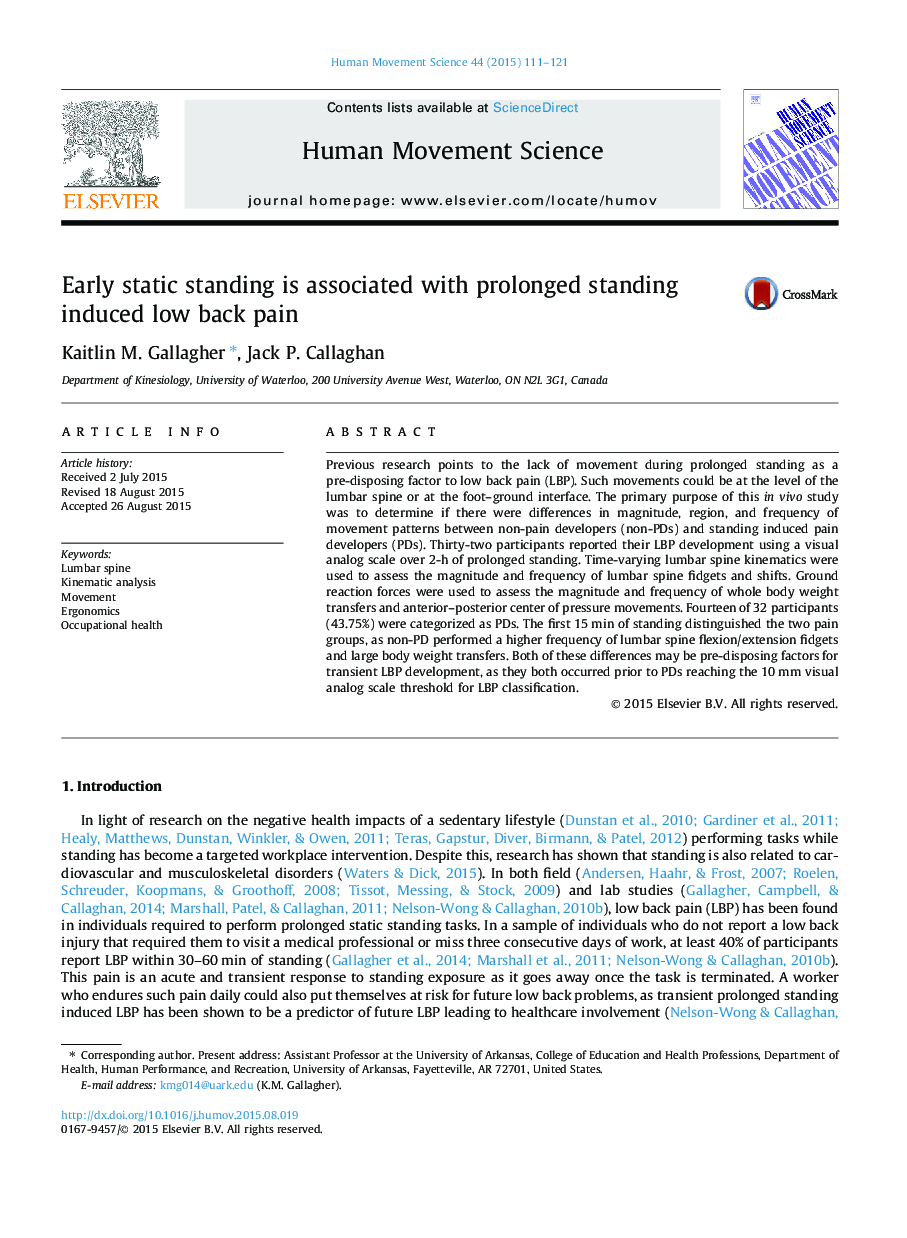| Article ID | Journal | Published Year | Pages | File Type |
|---|---|---|---|---|
| 7291768 | Human Movement Science | 2015 | 11 Pages |
Abstract
Previous research points to the lack of movement during prolonged standing as a pre-disposing factor to low back pain (LBP). Such movements could be at the level of the lumbar spine or at the foot-ground interface. The primary purpose of this in vivo study was to determine if there were differences in magnitude, region, and frequency of movement patterns between non-pain developers (non-PDs) and standing induced pain developers (PDs). Thirty-two participants reported their LBP development using a visual analog scale over 2-h of prolonged standing. Time-varying lumbar spine kinematics were used to assess the magnitude and frequency of lumbar spine fidgets and shifts. Ground reaction forces were used to assess the magnitude and frequency of whole body weight transfers and anterior-posterior center of pressure movements. Fourteen of 32 participants (43.75%) were categorized as PDs. The first 15Â min of standing distinguished the two pain groups, as non-PD performed a higher frequency of lumbar spine flexion/extension fidgets and large body weight transfers. Both of these differences may be pre-disposing factors for transient LBP development, as they both occurred prior to PDs reaching the 10Â mm visual analog scale threshold for LBP classification.
Related Topics
Life Sciences
Neuroscience
Cognitive Neuroscience
Authors
Kaitlin M. Gallagher, Jack P. Callaghan,
